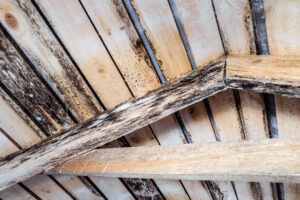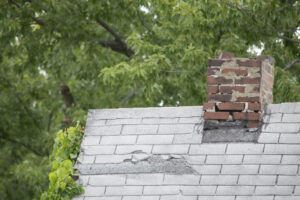
The Value of Building Code Inspections and Home Inspections in Safeguarding Your Home, Part 2
COVID-19 ushered in an era when buyers willingly skipped their home inspections, leading to costly and dangerous mistakes that could have been prevented.
In Part 2 of our two-part series, the Building Safety Journal looks at the importance of home inspections and why they shouldn’t be skipped.
The COVID-19 pandemic changed the way people work, communicate, shop and play, and while some of its impacts proved to be more far-reaching than others, the most peculiar involved a reduction in home inspections. As uncertainty increased amid stay-at-home orders, the number of homebuyers quickly exceeded the volume of available dwellings. Bidding wars became the norm, and while 36 percent of buyers now feel they overpaid, it’s the lack of an inspection that may hit them the hardest.
Data from national real estate brokerage Redfin showed that 20 percent of winning home offers waived their inspections during the height of the pandemic in June 2020. This may have helped some homebuyers acquire the home of their dreams, but without an inspection, there may be any number of hidden problems that could turn their purchase into a nightmare.

“When I heard that people were foregoing home inspections, quite honestly I cringed,” said Michael Popich, Manager of the Bureau of Construction Services with the City of Indianapolis Department of Business & Neighborhood Services. “You know the home looks nice from the outside, but without getting inside and having somebody with the experience and expertise to actually look behind the bandages, you don’t know what you’re getting.”
And what’s inside could be quite costly, if not downright dangerous.
Should You Skip Your Home Inspection When Buying a New House?
Patrick Nolan, a certified professional inspector with Integrity Inspection Group, has visited numerous homes after the buyer chose to skip an inspection during the buying process. He said these inspections tend to reveal issues or conditions that, at the very least, surprise homeowners.
“On one inspection, there was a disclosure by the previous owner of ‘wildlife evidence’ in the attic spaces of the home,” said Nolan. “I entered the attic space and was blasted with a potent smell of bat guano. I then witnessed several bats and enormous amounts of bat guano.”
The homeowner failed to consider the potential severity of this problem when buying the home, but it became quite clear after his inspection. He ultimately spent more than $20,000 to remove the guano and eliminate all points of entry from the exterior, and remove and replace the insulation.
In another instance, Nolan encountered a homebuyer who believed his own experiences superseded the need for an inspector.
“He told me that the house looks great, and he didn’t think he needed an inspection, as he had bought several houses in the past and knew he found a good one,” Nolan recalled.
However, the buyer didn’t realize that the home contained siding and roof shingles that were involved in class action lawsuits. While the siding proved to be in okay shape relative to what Nolan typically encounters, it still needed some work.
“The shingles were poor and there was a bunch of mold in the attic space,” said Nolan. “The homeowner was not expecting these findings.”

Home Inspections Allow Roofs, Attics and Crawlspaces to Enter the Spotlight
Andy Blum, a certified home inspector with Pillar to Post Home Inspectors, said that people might be afraid of heights and avoid certain spaces, or lack the physical ability to examine them. This greatly increases the need for a home inspection.
“Many times, I find missing shingles when the roof is not visible from the ground,” said Blum, who is FAA-certified to fly a drone and take pictures of any roof he is physically unable to walk. “People have no idea what’s up there.”
Blum once inspected a two-story home with a chimney that had completely deteriorated on one side. The roof had also deteriorated, but neither problem was visible from the ground.

Similarly, homebuyers won’t know what’s lurking in the crawlspaces if no one takes a look. During one inspection, Blum found that the home’s main wooden beam was being supported by an old car tire and rim. Blocks of concrete, bricks, pieces of wood and other material had been formed into a pyramid and were being used to hold the house up. This led to conditions that were dangerous, unstable and uncomfortable, with floors that sloped in some rooms.
Crawlspaces can also reveal issues with the plumbing system.
“At the end of one inspection, I went into a crawlspace and found that the bathtub plumbing had detached, probably some years ago,” said Blum. “Water was dripping from the bathtub since I ran it just prior. The bathtub plumbing had slimy hair hanging out of it. The rest of the plumbing was still there but detached and hanging in midair.”
Consequently, water poured into the crawlspace every time someone showered or took a bath. The only silver lining was that mold had not yet developed, but the leak created an unhealthy situation regardless.
Finally, Blum spoke about another area that is commonly overlooked by homebuyers and owners: the attic. He recommends that any discolored spots are tested for mold to determine any possible health consequences.
Without a Home Inspection, Hidden Hazards May Remain
In addition to faulty components that served as the basis for a lawsuit, a home may contain items that are hazardous and have been recalled. While it would be difficult for a homeowner to determine these hazards during an open house or solo visit, a good inspector will try to stay on top of recalls and other reported problems.
Blum pointed to the danger of the Federal Pacific electrical panels, which are estimated to be the cause of 2,800 fires every year. Federal Pacific is out of business, but its products remain in millions of homes nationwide.

“When I take the cover off of the electrical panel, I use a thermal camera to sense the temperature,” said Blum. “Sometimes I will find wiring that is overheating. The hottest wire I’ve seen thus far was 186 degrees Fahrenheit.”
Insulation is another issue to consider – some homes may include insulation that is toxic while others may not have any insulation at all. Vermiculite is particularly problematic because almost all of it is contaminated with asbestos.
“There is a trust fund set up due to class action lawsuits, but it needs to be sampled and verified that it came from a particular mine [in Libby, Montana],” said Blum. “Home inspectors can take a sample of this insulation and have it analyzed by a laboratory.”
Blum also noted the widespread use of polybutylene, a plastic-based piping used in plumbing systems. According to the International Association of Certified Home Inspectors, polybutylene may break and cause flooding and may have been installed in as many as 10 million homes between 1978 and the mid-1990s. It was never formally recalled and there are no regulations mandating its replacement in existing homes, but a class action lawsuit led to $1 billion in payouts.
Not all plumbing issues can be attributed to piping. There are times when the contractor is to blame, which is why Blum recommends hiring an inspector for both existing and new construction homes. In one instance, he found a mini tequila bottle stuck in the floor drain by the furnace.
Nolan concurred that home inspections are equally important for both existing and new construction homes. While new construction homes have the advantage of being inspected at multiple stages for a variety of code requirements, Nolan said he almost always finds a laundry list of deficiencies/defects.
What to Expect from a Home Inspection
For those who are new to the home inspection process, Blum and Nolan both said to plan for at least three hours. Depending on the inspector’s tools, thoroughness and experience, an inspection could take longer.
In addition to the problem areas, a good home inspector will check for gas/CO leaks, radon, suspicious smells, signs of fire damage, or problems with the foundation. The list varies by inspector, so it is best to read online reviews, ask friends and family for a recommendation, and ask a lot of questions before selecting.

While the client may not be required to attend the inspection, Popich urges homebuyers to be present, just as he was when purchased his last home.
“I wanted to see where the inspector was going, what he was looking at,” said Popich. “If a situation arose where he wasn’t going into the crawlspace, I’d want to know why.”
If given the choice, Popich recommends that homebuyers schedule their inspection on a day with rain in the forecast.
“If there’s a window or part of the roof that leaks, it’s not going to leak on a dry day,” said Popich. “Rainy days may also bring out smells. If it’s raining and you can start to smell it down in the basement, pay the extra fee for a mold test.”
Read Part 1 of our two-part series, where the Building Safety Journal explores the need for building code inspections, the reasons for their creation and how they differ from home inspections, here.








